Spathiphyllum “Peace Lily” Complete Care Guide
The Peace Lily (Spathiphyllum) is a delightfully unique flower with beautiful green leaves and very decorative white flowers. I am not sure where its common name came from, but I know that it depicts exactly what you can experience while looking at it – overwhelming peace and joyful tranquility.
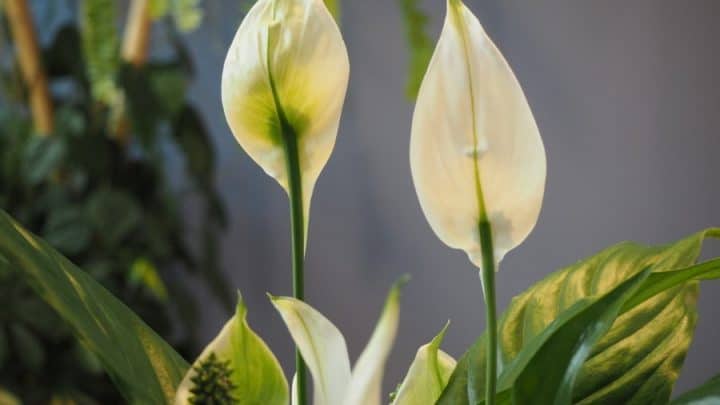
Care
Making the Peace Lily grow nicely and sprout new flowers every now and then is not very difficult. You have to remember however, that its natural habitat is the tropics, therefore providing it with suitable conditions in a flat requires some work. In particular, the high level of air humidity and substratum moisture it requires is significant.
But let’s take one thing at a time and start with the most important thing for every plant, namely light.
Light
A big merit of the Peace Lily is that it does not need very strong light, thanks to which it can be grown in slightly darker places. Here I would quickly like to repeat what I have already mentioned several times on this blog – “a slightly darker place” does not mean a dark corner a long way away from a window. “Slightly darker” means, for example, the windowsill of a less well lit window.
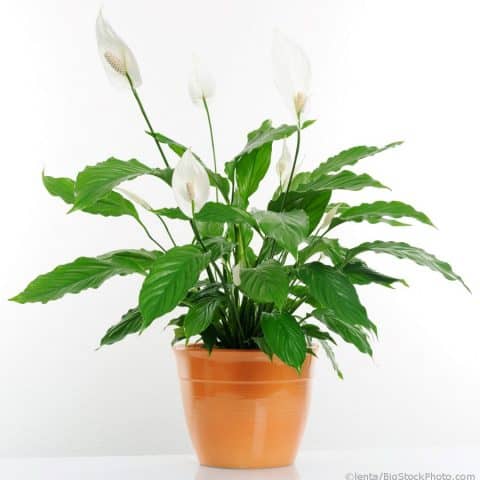
The ideal light conditions for the Peace Lily are to be found on the windowsill of an east- or west-facing window in the spring or summer, and a south-facing one in the fall or winter. Generally, the idea is to guarantee conditions that are close to its natural environment, and in a tropical climate the length of the day and the intensity of light are more or less the same throughout the year.
Watering and fertilising
In the tropics the soil is constantly moist, so you have to provide the Peace Lily with soil just like this. Even a short period of drought will cause the leaves to start to sag and then to wilt.
Every day in the summer and every few days in the winter, check the moisture of the soil in the pot. If you feel that the soil is starting to dry out (but you can still feel some slight moisture), water the plant. Pour as much water into the pot as is required for the excess to start flowing out into the saucer. After about 30 minutes pour any remaining excess water out of the saucer.
In the period of fast growth (spring, summer) it is worth adding a liquid fertilizer to the water used to water the plant. This will help the plant grow faster and flower more abundantly.
Air humidity
The Peace Lily loves humid air (above 50%). Again, keep in mind that its natural habitat is a tropical jungle in which it rains every day and it is warm and sultry. Conditions like these differ from the conditions in our homes in which the air is usually dry (especially in winter, in the heating season). In a room with a low level of humidity the Peace Lily will stop blooming and the tips of its leaves will start to yellow.
In order to guarantee a suitable level of humidity, mist the plant 2-3 times a day with lukewarm water, or use an air humidifier. You can also put the pot on pebbles partially immersed in water, although this alone will not always suffice.
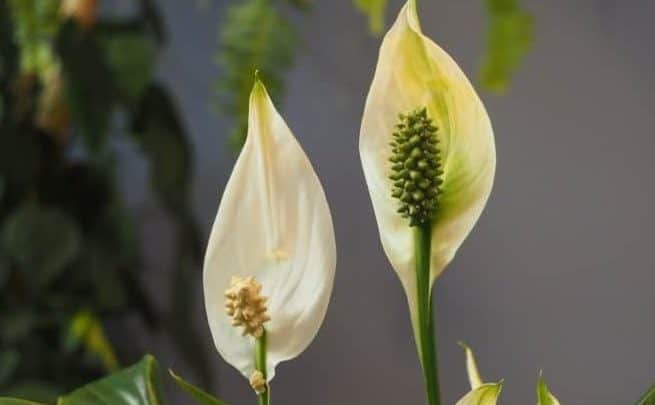
Temperature
The air temperature in the room the Peace Lily grows in may not be less than 13°C (55°F). Preferably it should always be above 16°C (61°F).
Repotting
Every year in spring check to see if the root clump fills the pot. If so, repot the plant to a pot which is 2-3 cm (1 in) wider in diameter. Remember the drainage layer at the bottom which will prevent the soil from becoming water-logged. (The Peace Lily likes soil which is moist but not soggy. Soggy soil can make the plant roots start to rot.)
Propagation and division
You can propagate Spathiphyllum from seeds sown at a temperature of about 20°C (70°F) and in high humidity. However, propagation by division is a simpler method. Divide the root clump in the middle by pulling one part of the plant apart from the other, and place each part in a separate pot.
Dividing the plant every 3-4 years can have a positive influence on its blooming.
Pests
The Peace Lily is quite resistant to pests if it grows in favourable conditions (appropriate humidity, light etc.). In unfavourable conditions it can easily become a target for the spider mite, scale or mite and sometimes even the mealybug or whitefly.
Why doesn’t my Peace Lily bloom?
There may be several causes but the most common are:
- an insufficient amount of light (which can often occur in the autumn-winter period; move the plant to a better lit place),
- a low level of soil moisture (water more frequently),
- low air humidity (mist the plant every day with tepid water),
- barren substratum (check the roots, repot the plant to a bigger pot; try to feed the plant with a fertilizer for blooming plants),
- the plant is too old (renew the plant by dividing it into two smaller ones and placing them in separate pots).
Appearance
The Peace Lily is a plant with big glossy green leaves and long erect stalks tipped with spadices enclosed within white spathes. Depending on the variety the Peace Lily can reach from 30 cm (1 ft) to even 2 m (3.3 ft) (the ‘Sensation’ variety). Its leaves (also depending on the variety) can be 12 to 65 cm (5 – 26 in) long and 3 to 25 cm (1 – 10 in) wide, and the white spathe enclosing a flower can be 8 to 30 cm (3 – 12 in) in length.
The popular species of the Peace Lily include among others: ‘Petite’ (about 40 cm (1.3 ft) high), ‘Clevelandii’ (about 60 cm (2 ft)) and ‘Mauna Loa’ (about 1 m (3.3 ft)).
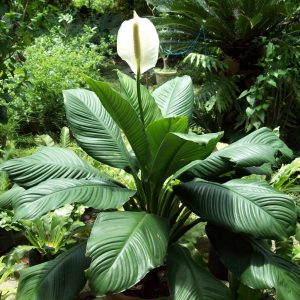
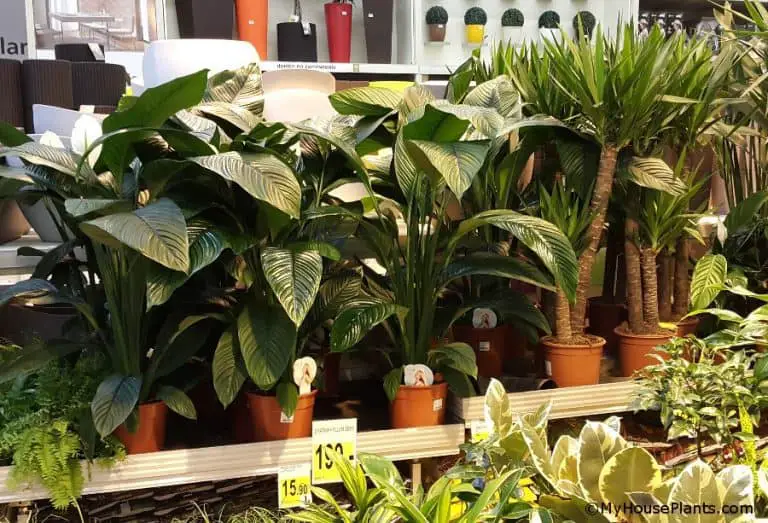
Origin
Spathiphyllum belongs to the family Araceae and numbers several species coming mainly from tropical regions of South America.
